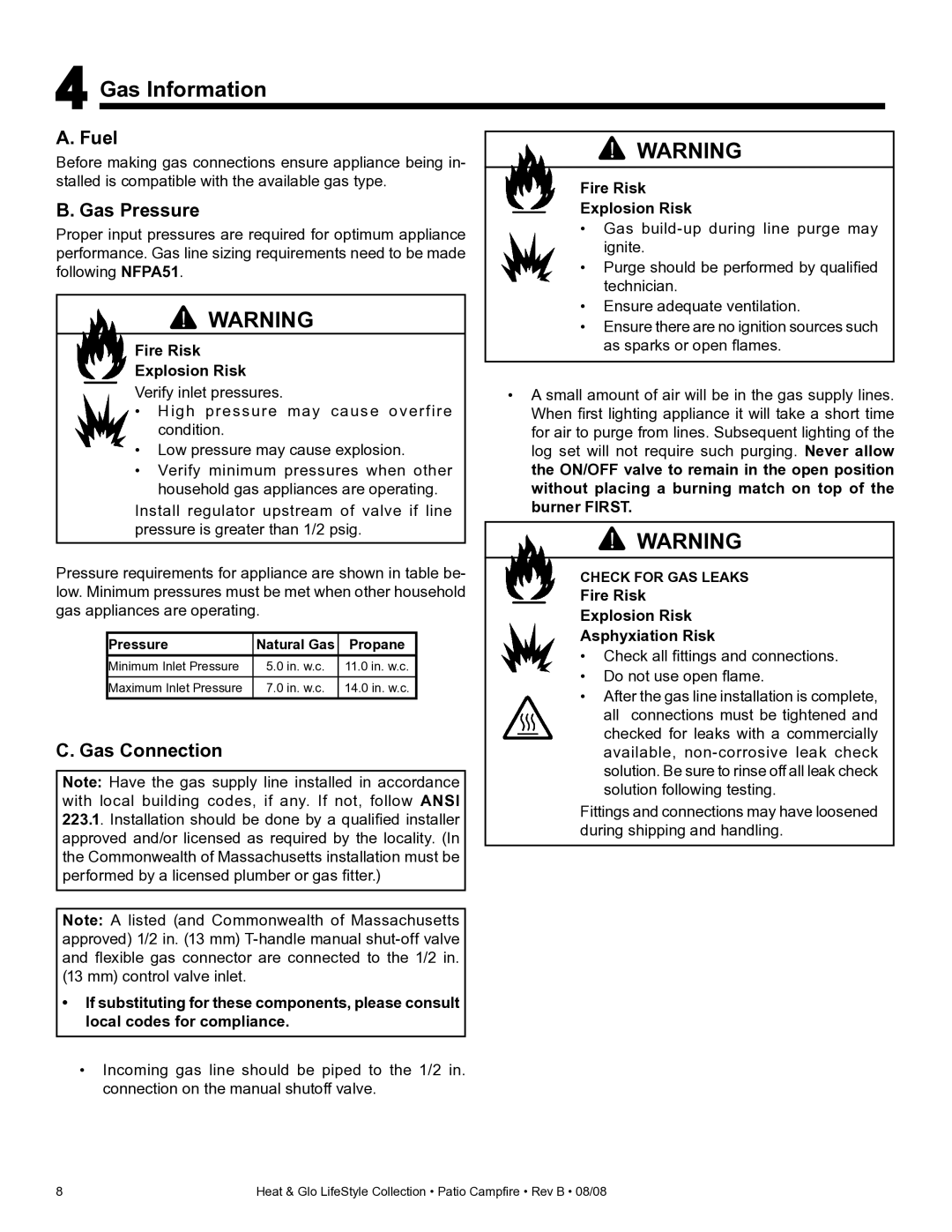
4 Gas Information
A. Fuel
Before making gas connections ensure appliance being in- stalled is compatible with the available gas type.
B. Gas Pressure
Proper input pressures are required for optimum appliance performance. Gas line sizing requirements need to be made following NFPA51.
![]() WARNING
WARNING
Fire Risk
Explosion Risk
Verify inlet pressures.
•High pressure may cause overfire condition.
•Low pressure may cause explosion.
•Verify minimum pressures when other household gas appliances are operating.
Install regulator upstream of valve if line pressure is greater than 1/2 psig.
Pressure requirements for appliance are shown in table be- low. Minimum pressures must be met when other household gas appliances are operating.
Pressure | Natural Gas | Propane |
Minimum Inlet Pressure | 5.0 in. w.c. | 11.0 in. w.c. |
|
|
|
Maximum Inlet Pressure | 7.0 in. w.c. | 14.0 in. w.c. |
C. Gas Connection
Note: Have the gas supply line installed in accordance with local building codes, if any. If not, follow ANSI 223.1. Installation should be done by a qualified installer approved and/or licensed as required by the locality. (In the Commonwealth of Massachusetts installation must be performed by a licensed plumber or gas fitter.)
Note: A listed (and Commonwealth of Massachusetts approved) 1/2 in. (13 mm)
•If substituting for these components, please consult local codes for compliance.
![]() WARNING
WARNING
Fire Risk
Explosion Risk
•Gas
•Purge should be performed by qualified technician.
•Ensure adequate ventilation.
•Ensure there are no ignition sources such as sparks or open flames.
•A small amount of air will be in the gas supply lines. When first lighting appliance it will take a short time for air to purge from lines. Subsequent lighting of the log set will not require such purging. Never allow the ON/OFF valve to remain in the open position without placing a burning match on top of the burner FIRST.
![]() WARNING
WARNING
CHECK FOR GAS LEAKS
Fire Risk
Explosion Risk
Asphyxiation Risk
•Check all fittings and connections.
•Do not use open flame.
•After the gas line installation is complete, all connections must be tightened and checked for leaks with a commercially available,
Fittings and connections may have loosened during shipping and handling.
•Incoming gas line should be piped to the 1/2 in. connection on the manual shutoff valve.
8 | Heat & Glo LifeStyle Collection • Patio Campfire • Rev B • 08/08 |
